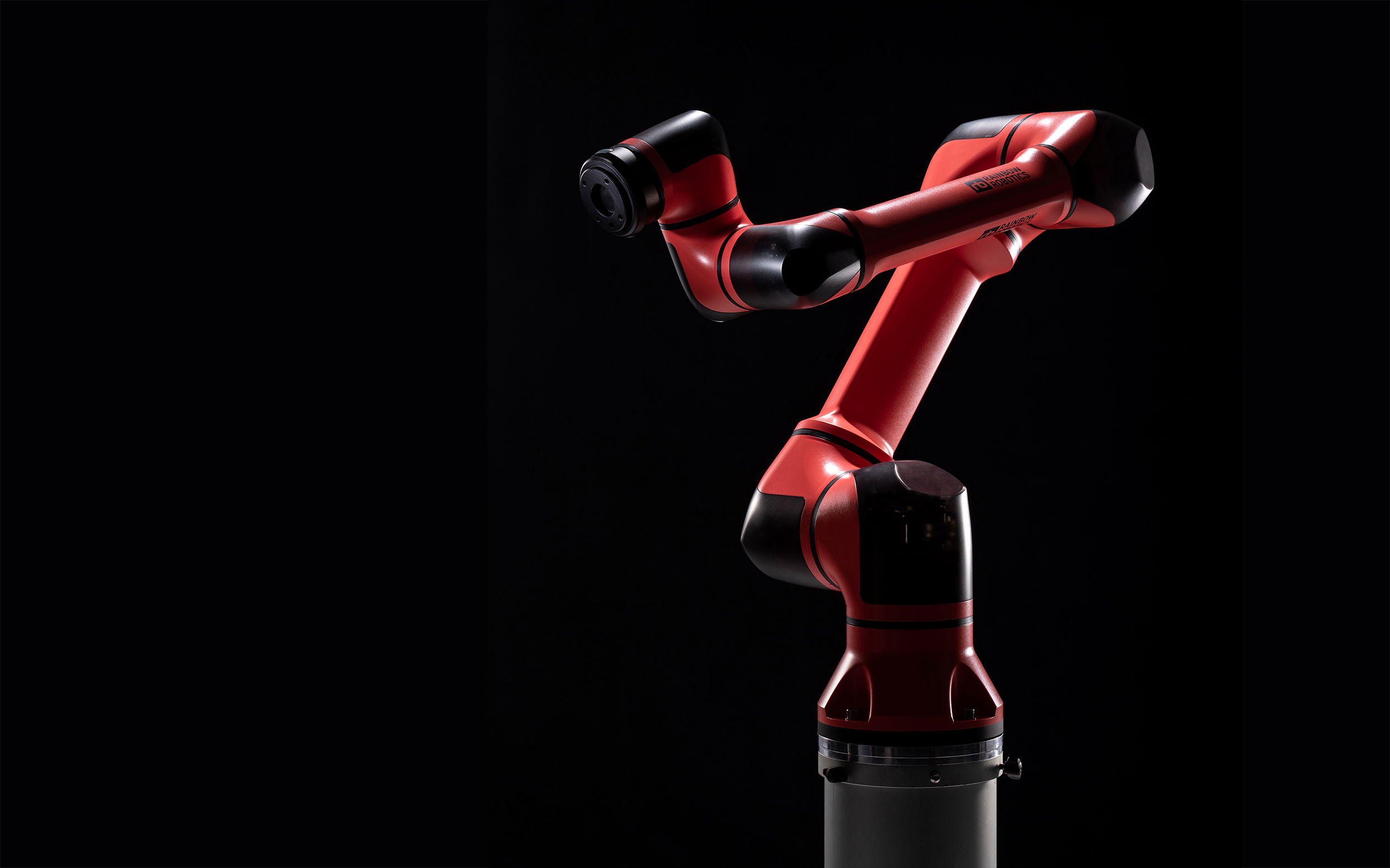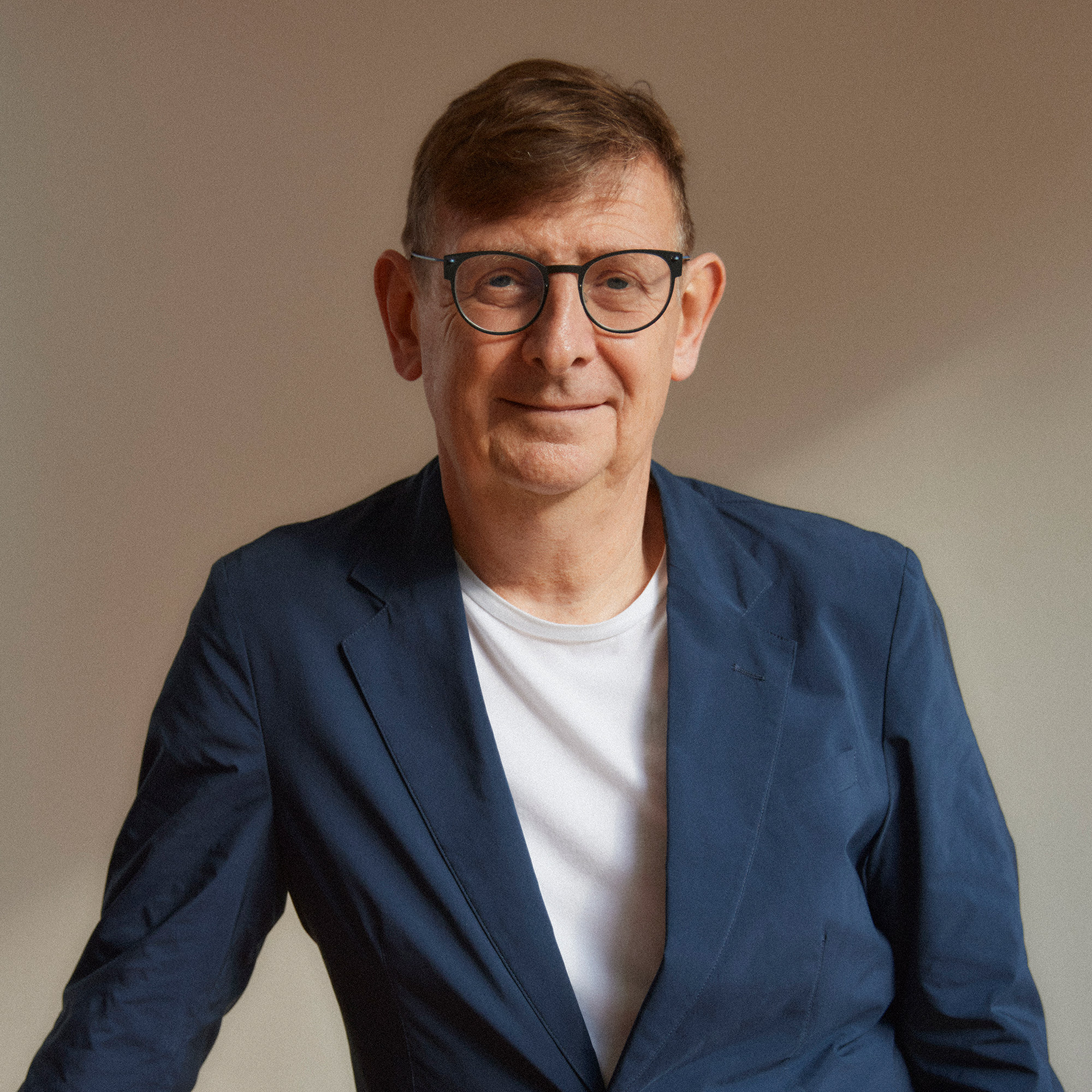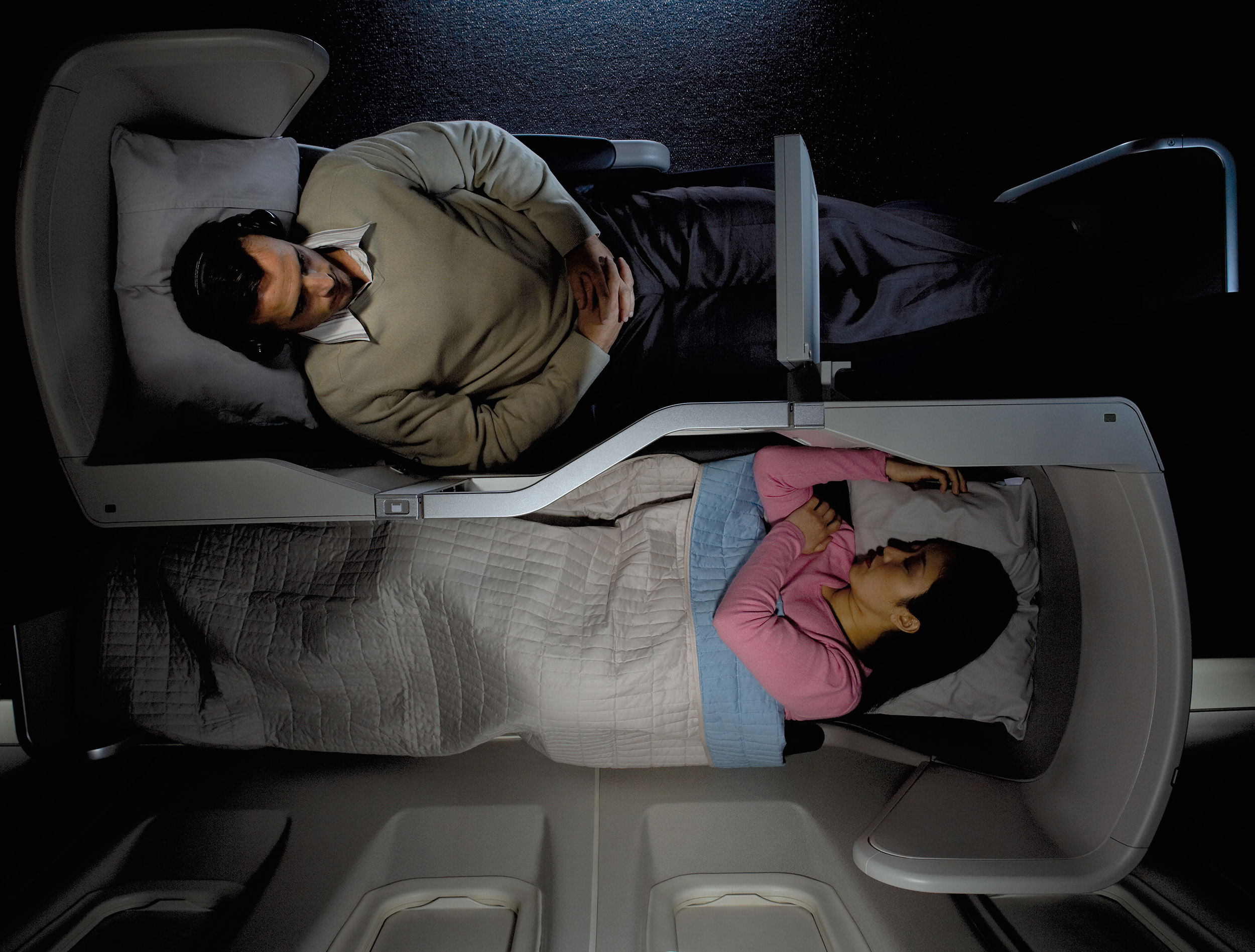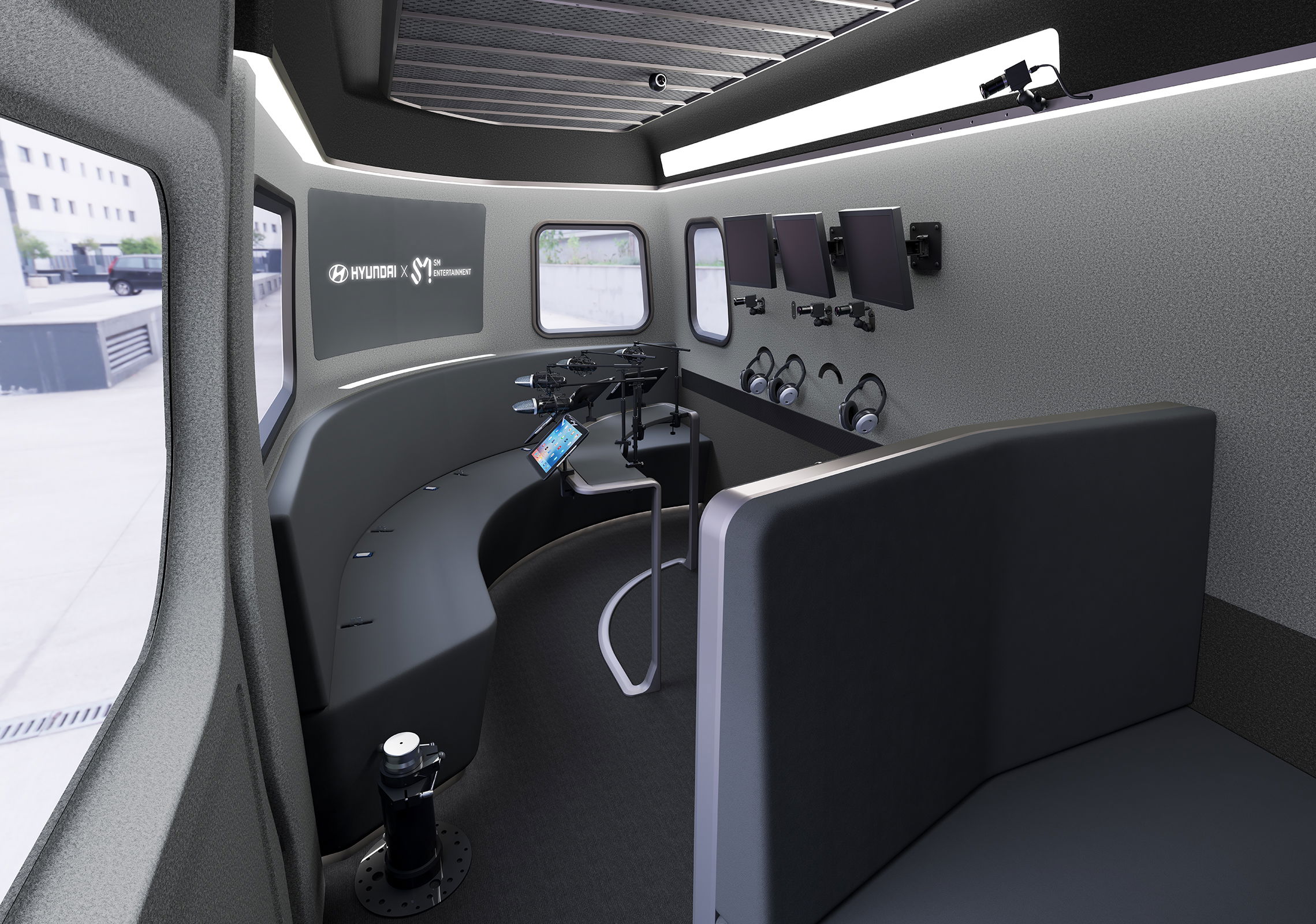tangerine Founder Martin Darbyshire Interviewed About His Career In Design For South Korea’s ChosunBiz

“Good design goes beyond appearances — it transforms human experience. To me, design is about more than aesthetics — it’s about changing lives, enriching experiences, and quietly transforming the fabric of industry.”
Martin Darbyshire, founder of world-renowned design firm tangerine, answered the question “What is good design?” by saying, “It’s not just about changing appearances.” For nearly 40 years, Darbyshire has worked with many companies such as Apple, Samsung, and LG, focusing on expressing the convergence of technology, experience, and brand strategy through strategic design. He has also long served as a judge for one of the world’s top three design awards, the Red Dot Design Award.
We met Darbyshire during his recent visit to Seoul for a lecture. Some of his answers came instantly, while others were preceded by long pauses and careful thought—reflecting the depth of his contemplation on design.
Below is the Q&A.

Martin studied Industrial Design at Central Saint Martins, University of the Arts London, where he later taught as a visiting Professor. He is the Founder and Chairman of design consultancy tangerine. A regular juror at the Red Dot Design Awards in Germany and Singapore, a former trustee of the British Design Council, and a past board member of the World Design Organisation (formerly known as ICSID). He has also served as a judge for the World Design Capital (WDC).
What brought you to Korea?
“I was invited to give a lecture on why design leadership is important for Korean companies. I also have meetings scheduled with Korean clients. Personally, I always try to speak directly with senior executives or top management when meeting businesses. That’s because design strategy must be executed through a ‘top-down’ approach.”
Why is that?
“If designers only communicate with middle managers or practitioners, it’s difficult to drive strategic change within a company. Design isn’t just about modifying a product’s appearance—it has the power to shift the organization’s direction itself. Good design requires original thinking and bold, decisive actions, and that requires a structure that supports it. Most companies that have succeeded through design, such as Apple, have adopted this approach. That’s why I insist on talking directly to the company’s leadership.”
In Korea, Hyundai Motor and Kia are often cited as examples of companies that successfully rebranded through design-driven management.
“Hyundai and Kia have made bold investments in improving their technology, talent, and design quality. Appointing Peter Schreyer as Chief Design Officer (CDO) was a bold and strategic move—not only for his design skills. I’ve met him several times, and he has not only exceptional design sensibilities but also outstanding communication skills and the ability to earn trust within an organisation. I believe he had the deep trust and respect of top management, and that was the key driver behind Hyundai and Kia’s transformation.
You’ve once again been selected as a judge for the Red Dot Design Award this year. What do you mainly focus on during the judging process?
“Normally, several judges deliberate together, and a majority consensus is required for a design to win. For me personally, the key criterion is: Does it present new value? Whether it elevates the user experience, solves an existing problem in a smarter way, or brings about meaningful change—that’s what I look for.”
You’ve been in the design industry for nearly 40 years. Do you still have moments during judging when you feel, ‘Wow, this design is really fresh’?
“Absolutely. We see countless designs during judging. Most are average or fall within the realm of expectation. But occasionally, a design comes along that clearly stands apart. It moves you emotionally or leaves a strong impression experientially. That’s when I think, ‘This is really different. It resonates deeply.”
What, to you, is good design?
“Design is not just about styling—it’s about creating real change. Among the many projects tangerine has taken on, the most meaningful ones weren’t just about appearance, but about structural improvements that brought better outcomes. That’s what I consider good design—design that transforms human life and experience, and further brings subtle shifts to the flow of industry.”
Can you share an example?
“Recently, tangerine designed the first-class cabin for British Airways (BA) in the UK. Rather than just changing the appearance, we focused on improving the actual service experience for passengers. For instance, we moved the seat door from the side of the passenger to in front of them. This means that the crew will now serve meals facing the passenger, making the service more personal and intimate.
If you look at first-class seats in other airlines, the seats are often very large. But just being large doesn’t necessarily mean a better experience. Though this is an exclusive premium example that not many people will get to experience, the core principle is the same when designing anything: thinking about how we can enhance the human experience.”
So ultimately, the key is experience?
“Yes. True design is about efficiently creating better experiences within limited resources. Many talk about innovation, but in reality, they’re often trying to appear innovative. Design is not about appearances. It must truly transform user experience for the better.”
AI is now widely used across many fields. Do you use AI in your work?
“The team at tangerine uses AI when generating background scenes for animations or creating conceptual architectural images. AI certainly enhances efficiency in design, simplifies tasks, and reduces manual labour. However, what’s important is not the technology itself, but staying true to the core values of design: originality and responsibility.”
Earlier this spring, there was a trend of using ChatGPT to turn real photos into cartoon-style images. What do you think about the loss of originality in creative works due to AI?
“Design is inherently a process of incremental improvement built upon existing things. Of course, originality in creative work is an important issue. What matters most is why and how AI is used.
Especially since every AI prompt is recorded, if someone uses others’ intellectual property (IP), they must be able to clearly explain whether their creation was made through fair and proper means. That responsibility cannot be ignored.”
Have you ever felt a sense of crisis because of AI?
“Not a crisis, but I’ve become more aware of the difference between humans and AI. For example, ChatGPT is incredibly powerful at not only generating text but evaluating it and through machine learning can offer guidance to the human. But in the end, ChatGPT is just a tool. The analysis or synthesis it presents may be flawed, if the input data is flawed—and the problem is, AI doesn’t know when it’s wrong, even if it can recognise and convey what information it has used to generate its response. That’s a fundamental difference between humans and machines. Awareness and judgment—knowing what you’re doing matters. AI can enhance efficiency, but it can’t replace human depth of thought or fundamental insight.”
Designers must constantly seek new ideas. Where do you usually get inspiration from? Do you have a personal routine?
“I don’t have a special routine (laughs). But I do value encountering new experiences. That’s why I enjoy traveling. Meeting interesting people, observing the world, and being exposed to various stimuli—that’s important. I honestly feel uneasy when I see designers stuck in office cubicles. In such confined environments, I wonder if they can truly be challenged, questioned, or inspired.
The same applies to journalists, doesn’t it? You write better stories when you go out and engage with people.”
Any advice for young Korean designers?
“Many young designers focus on computer skills or producing more refined outcomes. But in doing so, they often miss the most important questions. They should ask themselves: Is this the best possible design? Is this truly the right direction?
What matters isn’t the polished result, but the design that starts with the right questions. Designers, like journalists, need constant thinking, exploration, and originality. You can’t reach perfection. You can only inch closer to something better. That’s why I believe what Jony Ive said is the most important philosophy in design: Don’t just make something different—make something better.
It’s not about being different for its own sake. It’s about genuinely creating something better.”
Plus Point: What kind of company is tangerine?
tangerine is a global strategic design consulting firm headquartered in London, UK, founded by Martin Darbyshire in 1989. One of their first clients was California-based Apple, who spirited away a young Jonny Ive, who had recently joined tangerine as a designer. Possibly the most iconic design they have created is the groundbreaking business class seat design for British Airways in the early 2000s. It introduced the world’s first fully flatbed seats in business class, setting a new standard for aircraft seating design.

The flat bed business class seat of British Airways, designed by Tangerine, is the first of its kind in the world.
tangerine also has a strong connection with Korea. Since the early 1990s, it has completed close to 100 projects for LG Electronics. The consultancy has also collaborated with global Korean brands and retailers such as Innisfree, Hyundai and KIA, supporting them with design strategies, product and service innovation and customer experience enhancements.
In recent years, tangerine has been working in the emerging collaborative robotics sector, working first with Rainbow Robotics and KAIST University on a three-year research and design project to help the new robotics brand enter the market, and more recently with Hyundai Robotics.

For Hyundai, tangerine created a mobile recording studio within its Solati van in collaboration with SM Entertainment, which hosted some of Korea’s most famous K-pop bands.
By Kim Woo-young, Reporter. View Original Article (Korean) at Chosun Biz